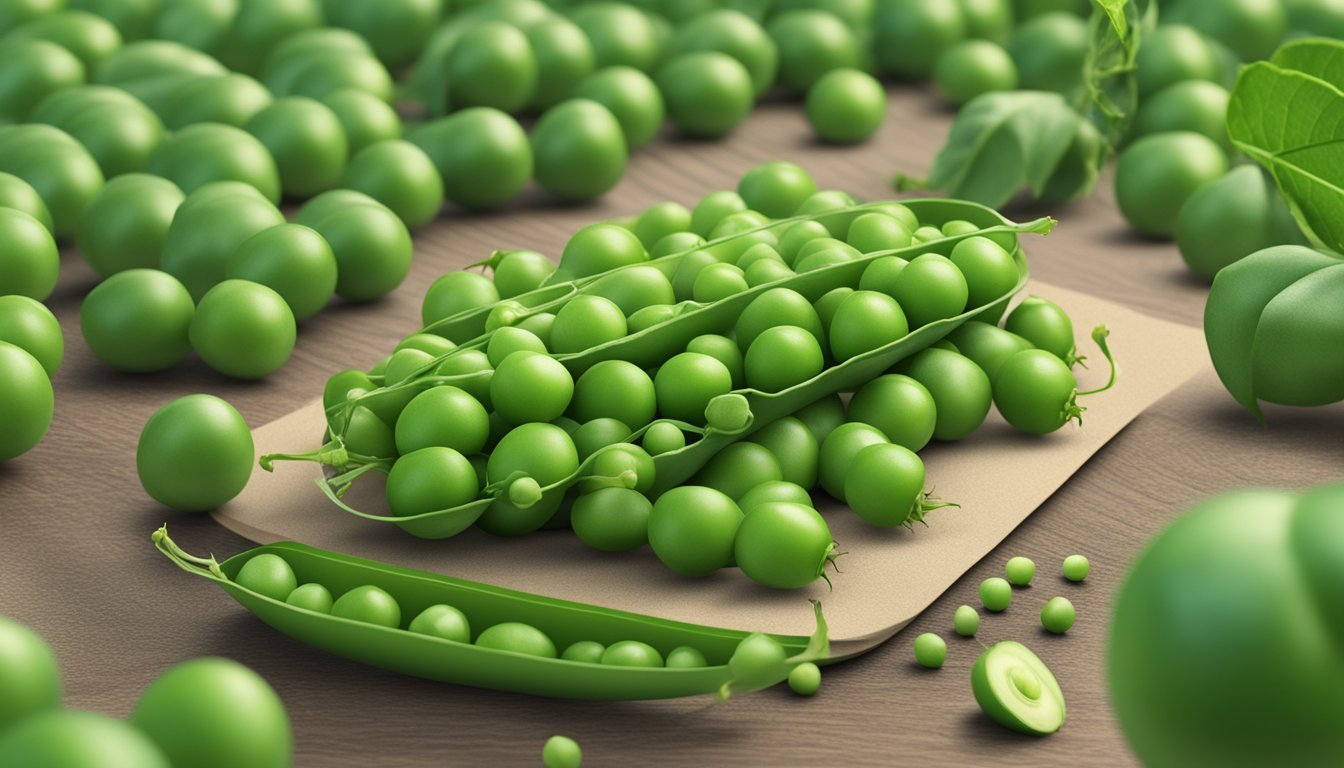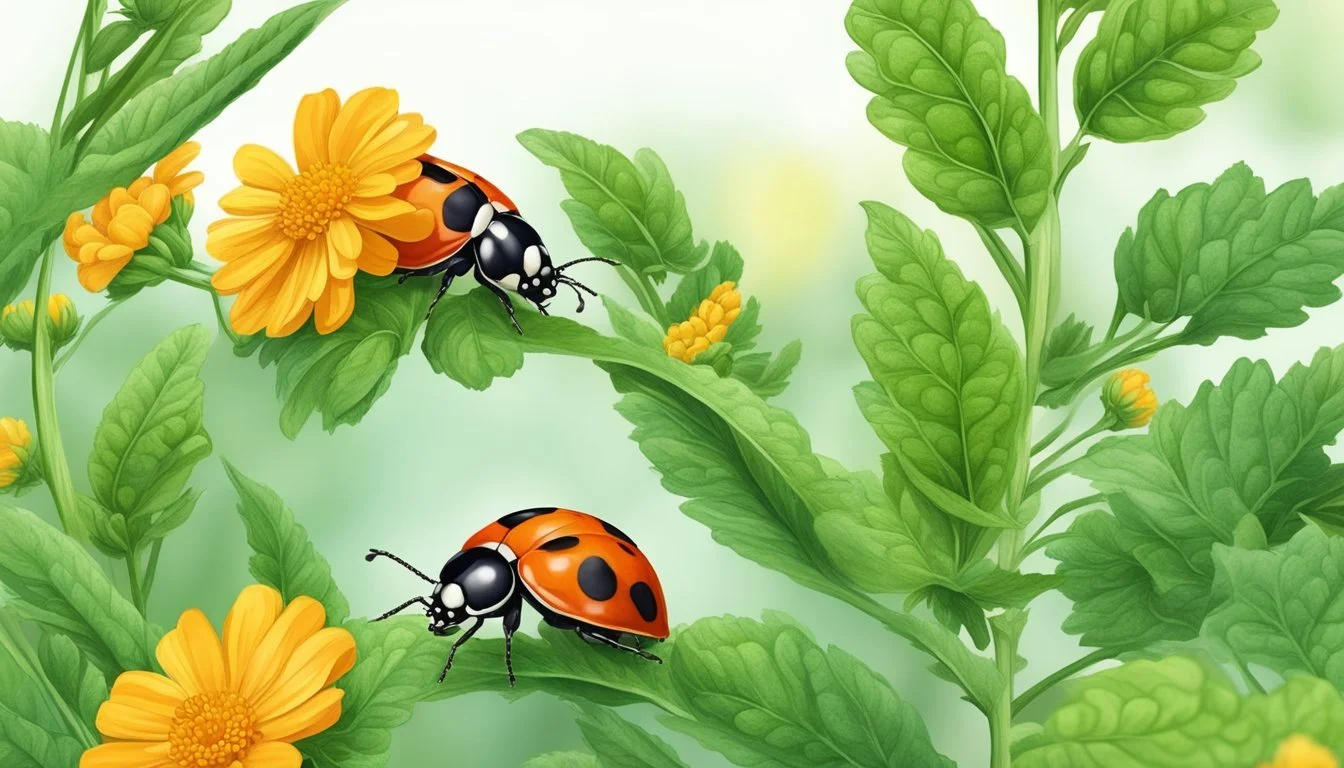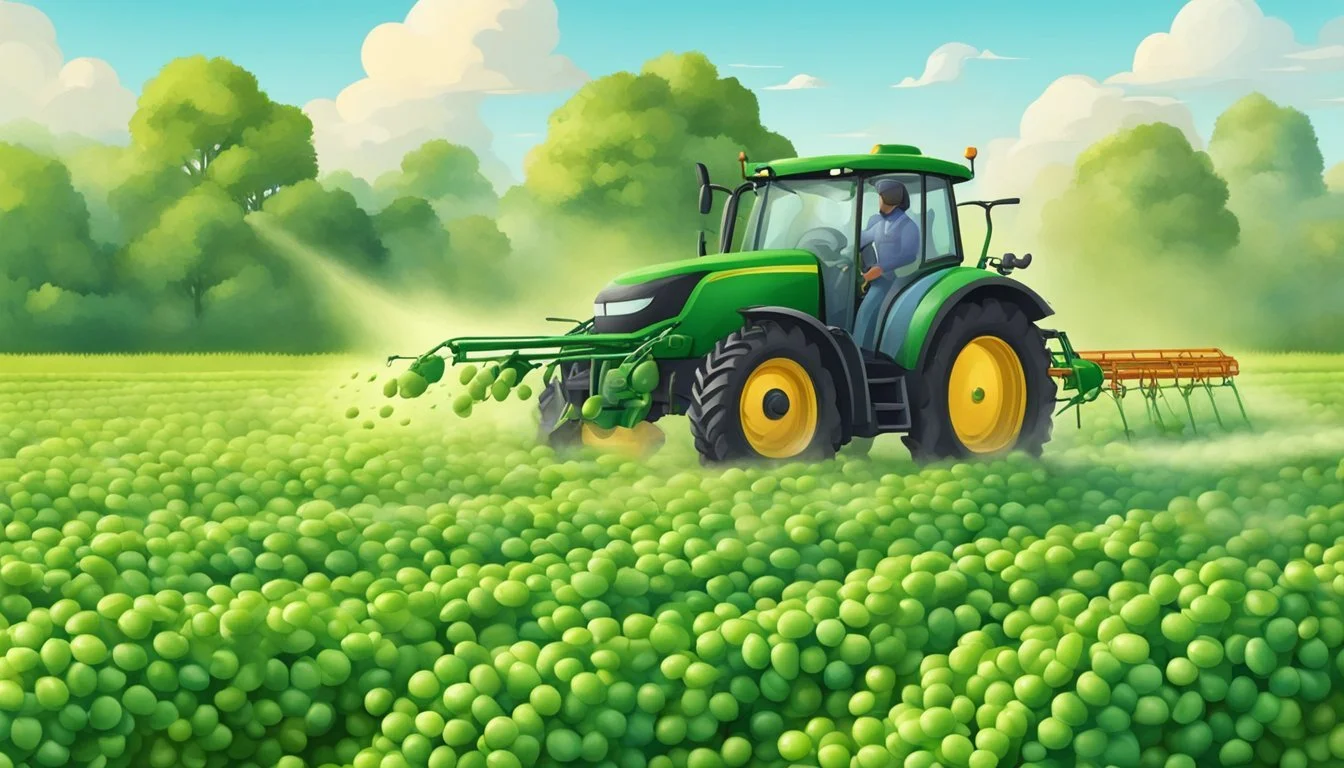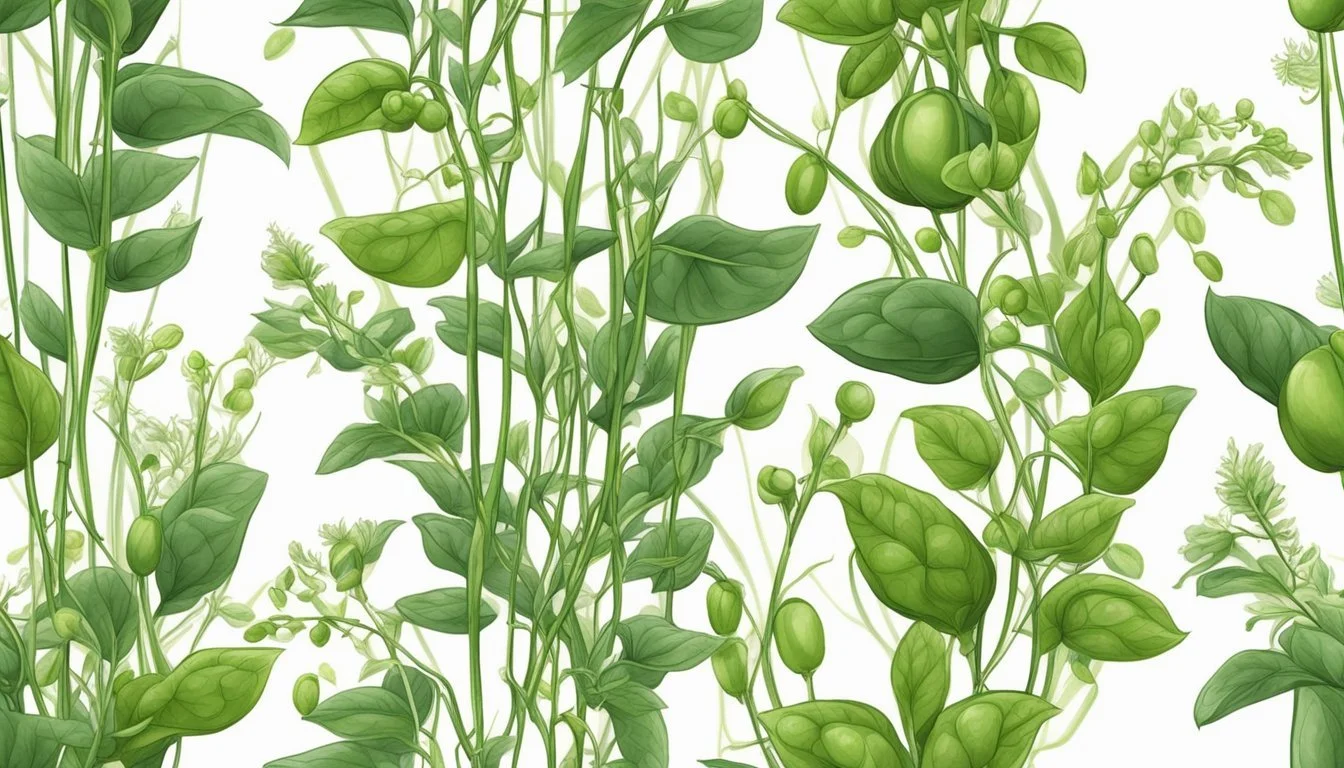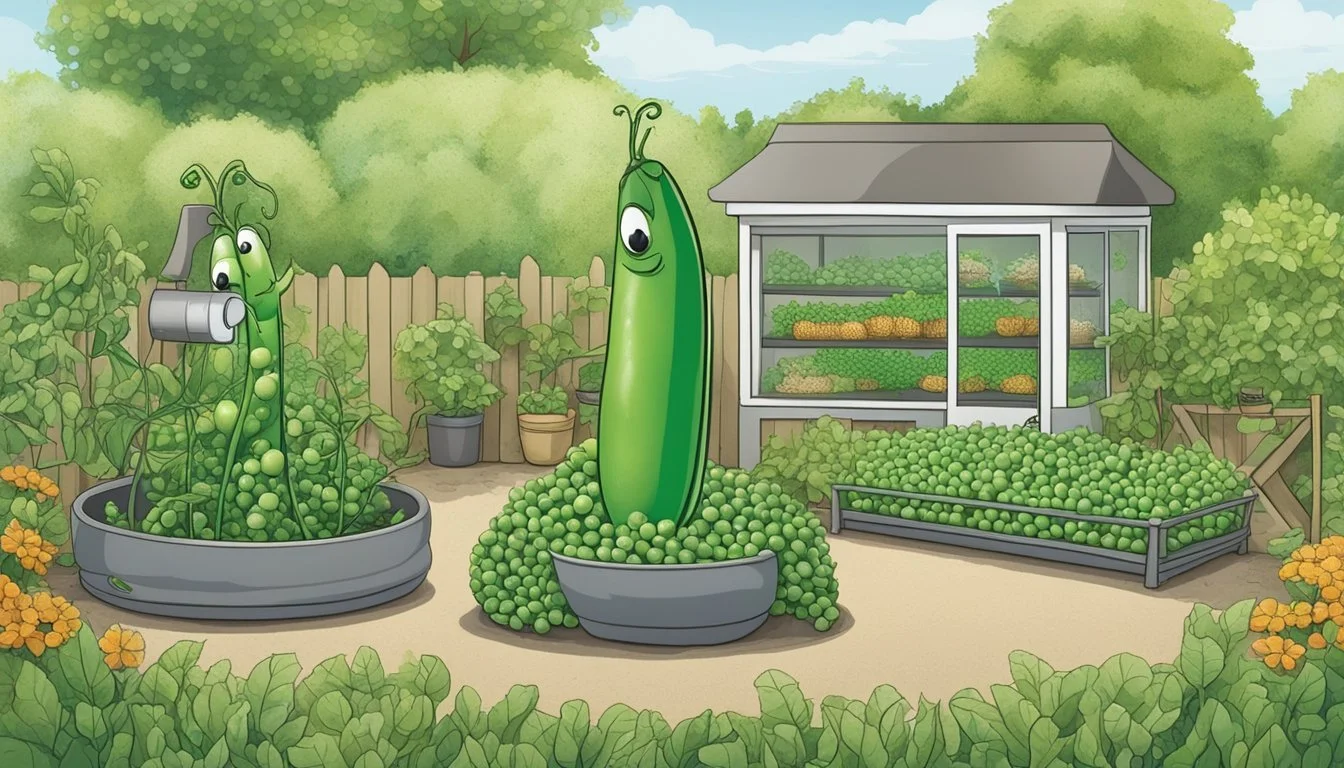Pest Control for Peas
Effective Strategies for a Healthy Crop
Garden peas, a favorite cool-season crop, often encounter various pests that can significantly affect their growth and yield. Effective pest control for peas is crucial for both home gardeners and commercial producers to ensure a successful harvest. Identifying the pests and understanding their impact is the first step towards safeguarding pea plants. Insects like aphids can stunt growth by sucking sap, while weevils and thrips may cause physical damage to the plants.
Managing these pests requires an integrated approach that combines different tactics, such as cultural practices, organic controls, and, if necessary, the use of pesticides. Employing methods such as rotating crops to prevent soil-borne diseases and using insecticidal soap or pesticides appropriately can help manage weevil infestations. Additionally, natural predators like ladybugs can be introduced as an eco-friendly method of controlling aphid populations.
Regular monitoring of pea plants is essential for early detection of pests, enabling prompt and targeted control measures that minimize damage. Keeping the planting area free of debris can deter ground-dwelling pests, while a strong spray of water may dislodge leaf-eating insects. Gardeners may also consider using organic bait pellets or neem oil spray to protect their pea crops without resorting to harsh chemicals. With a comprehensive pest management strategy, peas can thrive and produce plentiful, healthy pods.
Understanding Pea Pests
Effective pea pest management begins with the recognition and understanding of various pea pests and the damage they can inflict on your garden. Knowing your enemy is crucial in safeguarding your peas and ensuring a healthy harvest.
Types of Common Pea Pests
Peas can be afflicted by a diverse array of pests, which can vary depending on the region, but some are frequently encountered in North America. Major offenders include:
Aphids (Aphis craccivora): Soft-bodied insects that suck sap from plants, leading to yellow foliage and stunted growth.
Weevils: As in the case of pea weevils that bore into seeds, causing distinct holes.
Mexican Bean Beetles (Epilachna varivestis): Known for eating leaves and leaving behind skeletal foliage.
Bean Leaf Beetles (Cerotoma trifurcata): Create holes in leaves and can transmit disease.
Cutworms and Armyworms: These pests sever young plants at the soil line or eat foliage.
Thrips: Tiny insects causing damage by scraping at the plant cells.
Spider Mites (Tetranychus urticae): They cause yellowing leaves and can lead to leaf drop at high population levels.
Leafminers: Larvae that tunnel within leaves, creating visible trails.
Stink Bugs: Insert their mouthparts into pea pods and suck out the contents.
Lifecycle and Reproduction of Pests
Most pea pests progress through a life cycle involving eggs, larvae (or nymphs), and adult stages. For example:
Aphids can reproduce prolifically, often without mating, and can have multiple generations within a single season.
Pea weevils emerge in the spring, with females laying eggs on or in developing pea seeds.
Mexican Bean Beetles go through a typical beetle life cycle, with larvae that feed voraciously before pupating.
Understanding these cycles can aid in predicting and controlling infestations.
Identifying Pest Damage
Recognizing the specific damage caused by pests is key. Here are indicators for each:
Aphids: Look for clusters of small bugs on stems and undersides of leaves; symptoms include misshapen and yellow leaves.
Weevils: Round exit holes in dried peas are a telltale sign.
Beetles: Chewed leaves and presence of larvae underneath the leaves can be spotted.
Thrips: Damage includes stippled leaves and pods, often with black fecal spots.
Spider Mites: Look for fine silk webs on the underside of leaves along with mottled leaves.
Cutworms and Armyworms: Check for missing stems or chewed foliage.
Leafminers: The winding, white trails on leaves signify their presence.
Stink Bugs: Irregular dimples and spongy areas on pods and a decline in plant vigor are common signs.
Knowing these symptoms can facilitate early detection and timely pest control measures.
Preventive Measures
Effective pest control in pea cultivation requires a strategic approach that emphasizes pre-emptive actions. Focusing on prevention rather than reaction, gardeners can greatly reduce the occurrence and impact of pests on their peas.
Crop Rotation and Garden Hygiene
One of the cornerstones of pest prevention in home gardens is crop rotation. Rotating peas with unrelated crops can interrupt the life cycle of specific pests and diseases associated with peas. Gardeners should avoid planting peas in the same area more than two consecutive years. Coupled with meticulous garden hygiene, such as promptly removing plant debris and diseased plants, this practice discourages the persistence of pathogens and pests in the soil. Clean garden tools are also essential in preventing the spread of diseases.
Use of Resistant Varieties
Planting resistant varieties is another proactive measure for gardeners to consider. Many breeders develop pea seeds with increased resistance to common diseases. One should select varieties known to withstand pea diseases prevalent in their area, significantly diminishing the likelihood of infestations.
Cultural Control Techniques
Cultural control techniques are physical or environmental methods to prevent pest problems. These include ensuring adequate spacing between plants for proper air circulation, which helps minimize moisture-related diseases. To deter insects such as pea weevils, certain sprays like malathion can be applied, though gardeners often prefer chemical-free options. As a part of a cultural control strategy, maintaining strong plants through proper nutrition and watering is crucial for preventing diseases and pest infestations.
Organic Pest Control Methods
Organic pest control methods offer safe and environmentally friendly ways to protect pea plants from pests. These strategies aim to minimize harm to the ecosystem while effectively managing pest populations.
Biological Controls
Biological controls involve introducing natural predators to the pest population. Ladybugs are a prime example; they prey on aphids and other small insects that can damage pea plants. By maintaining a habitat conducive to these beneficial insects, gardeners can enhance their pest control efforts.
Natural Pesticides
Natural pesticides, such as neem oil and insecticidal soaps, are derived from plants and minerals. Neem oil interferes with the life cycle of pests, making it a strong deterrent, while insecticidal soaps can be sprayed directly on plants to target soft-bodied insects without harming the plants themselves.
Mechanical Barriers and Traps
For physical intervention, mechanical barriers like nets and floating row covers prevent pests from reaching the pea plants. Additionally, various types of traps can be used to capture and remove pests from the garden area. These range from sticky traps for flying insects to pheromone traps that lure specific pest species.
Chemical Pest Control
When managing an infestation of pests in pea crops, gardeners and farmers often turn to chemical pest control methods. Chemicals such as insecticidal soaps and pesticides provide a more immediate solution to insect infestations that can damage and reduce the yield of pea plants.
Weevils: These can be controlled by using insecticidal soaps or chemical pesticides specifically labeled for these pests.
Aphids: Effective control may require application of products containing neem oil or systemic insecticides.
Thrips: They demand timely intervention with suitable insecticides to prevent significant damage.
It's important that any chemical intervention is applied strictly according to the manufacturer's instructions, considering both the application rate and timing, to ensure safety and effectiveness. Gardeners should also be aware that overuse or improper application of pesticides can lead to pesticide resistance, where the surviving insects are no longer affected by the chemicals.
Chemical treatments are chosen for their ability to target specific pests with minimal harm to the pea plants themselves. However, farmers should always give consideration to the potential impact on the surrounding environment, including beneficial insects that play a role in controlling pest populations.
Here are some practices to consider for effective chemical pest control:
Identify the pest accurately to ensure the correct chemical control method is used.
Follow the recommended concentration and application timings on the label.
Rotate chemicals to prevent resistance buildup in pests.
Monitor the pea crop regularly for any signs of pest resurgence after treatment.
For more detailed, scientifically backed information, visiting websites such as Gardening Know How could provide additional guidance on chemical pest control for peas.
Pest Management for Specific Pests
Effective pest management in pea plants involves the targeted control of the most troublesome pests, including aphids, pea weevils, and caterpillars such as cutworms and armyworms. It is critical to understand their lifecycle and behavior for proper intervention.
Aphids Control
Aphids, specifically Aphis craccivora, pose a significant threat as they feed on the sap from the green tissues of pea plants. For aphid control, one should regularly inspect the undersides of leaves where they commonly cluster. Introducing beneficial insects like ladybugs can biologically control aphids, as they are natural predators. For severe infestations, applications of neem oil or insecticidal soap can be effective in reducing aphid populations.
Pea Weevil Management
Pea weevils, encompassing the pea weevil and the pea leaf weevil, are pests that directly damage the seeds and foliage of pea plants. Management includes crop rotation to prevent weevil lifecycle progression and the removal of infested plant material to reduce future populations. Insecticides can be used, but one must time applications properly to target adult weevils before egg-laying occurs.
Addressing Cutworms and Armyworms
Both cutworms and armyworms are destructive caterpillars that chew through stems and leaves, respectively. To manage these pests, maintain a clean garden free of plant debris where they may hide or overwinter. Beneficial nematodes released into the soil can control cutworm larvae naturally. A targeted application of Bacillus thuringiensis (Bt), a biological insecticide, is also quite effective against both types of caterpillars.
Disease Management in Pea Plants
Effective disease management in pea plants involves early identification and diligent treatment of infections. It is essential to recognize the common signs of diseases to take timely action and employ preventive measures.
Fungal and Virus Diseases
Numerous pathogens such as fungi and viruses can affect pea plants. Fusarium wilt, caused by the fungus Fusarium oxysporum, leads to yellowed and wilted foliage and can devastate crops if not managed. Similarly, the mosaic virus, evidenced by mottled leaves, stunts growth and reduces yields. Effective prevention of fungal and virus diseases often begins with choosing resistant varieties and practicing crop rotation.
Fungal Diseases:
Root rots: Soggy soil conditions can lead to root rots.
Powdery mildew: Appears as white, powdery spots on leaves.
Downy mildew: Characterized by yellow patches on the upper surface of leaves and a white or grayish mold underneath.
Virus Diseases:
Pea enation mosaic virus: Leads to leaf distortion and reduced pod set.
Bean yellow mosaic virus: Causes bright yellow and green mosaic patterns on leaves.
Identifying and Treating Root Diseases
Root diseases in peas, such as root rot and damping off, can be identified by soft, discolored roots, and stunted or dead plants. The application of fungicides and adjusting watering practices to avoid waterlogged soil can help control root diseases. It's crucial to remove and destroy infected plants to prevent spreading.
Treatment Steps:
Inspect roots for rot or galls, indicative of nematode infestation.
Apply appropriate fungicide if fungus is present.
Improve soil drainage to prevent further occurrences.
Combating Mildews and Blights
Mildews and blights, including powdery mildew and ascochyta blight, create distinctive spots and lesions on pea plants. Controlling these diseases includes fungicide applications and the removal of plant debris, which harbors spores. To prevent bacterial blight, it’s advisable to keep garden tools clean and avoid working with plants during wet conditions.
Preventive Measures:
Maintain good air circulation around plants to reduce humidity.
Avoid overhead watering to keep the foliage dry.
Employ sanitation practices such as cleaning tools and removing garden debris promptly.
Peas Growth and Care
To ensure a successful pea crop, one must provide optimal growing conditions and maintain appropriate watering and fertilization practices throughout the life cycle of the plant.
Optimizing Growth Conditions
Peas thrive in cool weather, and their growth is vigorous when temperatures range from 45 to 65 degrees Fahrenheit. They are usually one of the first vegetable crops planted in home gardens. These plants prefer full sun to partial shade, but in areas with hotter climates, some afternoon shade can protect them from the heat, especially during flowering and developing seeds. Peas also need well-drained soil with a pH between 6.0 and 7.0.
Soil Requirements:
Type: Well-drained
pH: 6.0 – 7.0
Alfalfa or a balanced 10-10-10 fertilizer can be applied to the soil prior to planting to promote healthy pea seedlings. Ensuring the soil is not too dense allows roots to penetrate and anchor the plant, leading to robust pods and leaves.
Watering Practices and Fertilization
Watering is crucial for peas, both during germination and as the plants grow. The soil should be kept consistently moist but not sodden. Overhead watering can lead to diseases and should be avoided. Instead, water at the soil level to keep foliage dry and minimize risk of mildew or other issues.
Watering Guidelines:
Method: Soil-level irrigation
Frequency: Consistent moisture, avoid over-saturation
Fertilization need not be frequent, as peas are light feeders and too much fertilizer can inhibit pod production. A low-nitrogen or phosphorus-rich fertilizer may be needed if plants show signs of distress or if poor soil conditions are suspected. Crop rotation is often practiced with peas to improve soil conditions and reduce disease risks for subsequent plantings.
Harvesting and Post-Harvest Management
The harvesting of peas is a delicate process that directly impacts the success of post-harvest management. Peas should be harvested when the pods are plump, tender, and bright green. Timing is crucial, as overly mature pods may lead to reduced quality of the seeds, which are the marketable part of the crop.
Upon harvesting, the quick cooling of peas is vital to maintain quality. Green beans and field peas, for instance, have optimal storage temperatures between 37 to 45°F and should be maintained at around 95% humidity to extend storage life, which typically ranges from 5 to 10 days.
Integrated Pest Management (IPM) strategies come into play immediately after harvesting to ensure pests do not compromise the crop quality. Effective IPM may include careful inspection of the seeds and the use of environmentally friendly control measures to manage any pest infestation.
Key Factor Optimal Condition Temperature 37 to 45°F Humidity 95% Storage Life 5 to 10 days IPM Practice Timing Immediately post-harvest
Furthermore, clean, sanitized storage facilities are imperative to prevent the attack by decay organisms. It’s essential that handlers undertake measures to minimize physical damage, as rough handling increases the susceptibility of the peas to degradation and pest invasion, thereby reducing market value.
The adoption of a pest management strategy, tailored to the needs of the harvested peas, can offer protection from various post-harvest challenges, including weed interference in subsequent seasons. As peas are prone to rapid spoilage and damage, the consistency and thoroughness of post-harvest handling will determine their final quality. Through conscientious harvesting and post-harvest management, one ensures the integrity of the peas from the field to the marketplace.
Frequently Asked Questions
When it comes to maintaining the health and productivity of pea plants, understanding and managing pests are crucial. The following frequently asked questions cover the most effective methods for controlling pea plant pests, the identification of common insects, natural remedies, preventative measures for pea diseases, protection against animal predation, and signs of pest infestation.
What are the most effective pest control methods for pea plants?
Effective pest control methods for pea plants include crop rotation, using insect netting, and applying pesticides only as needed. It’s essential to identify the specific pest before treatment to choose the most effective control strategy.
Which insects commonly infest peas and how can they be managed?
Common insects that infest peas include aphids, pea weevils, and cutworms. Managing these pests can be done through methods like introducing beneficial insects or using insecticidal soaps.
Are there any natural remedies effective against pea pests?
Yes, there are natural remedies such as neem oil, garlic spray, and beneficial insects like ladybugs that prey on pea pests. These remedies can be effective when implemented as part of an integrated pest management plan.
What steps can be taken to prevent pea diseases in the garden?
Preventing pea diseases involves planting disease-resistant varieties, ensuring proper spacing, and rotating crops annually. It's also important to remove and destroy any infected plants and maintain a clean gardening environment.
How can you protect peas from animal predation in the field?
Physical barriers such as fencing, netting, or row covers can protect peas from animals. Scare tactics and repellents might also be used, but their effectiveness can vary.
What are the signs of pest infestation in pea crops?
Signs of pest infestation in pea crops include holes or chew marks on leaves, stunted growth, and the presence of the pests themselves. Discoloration and wilting can also indicate an underlying pest problem.


